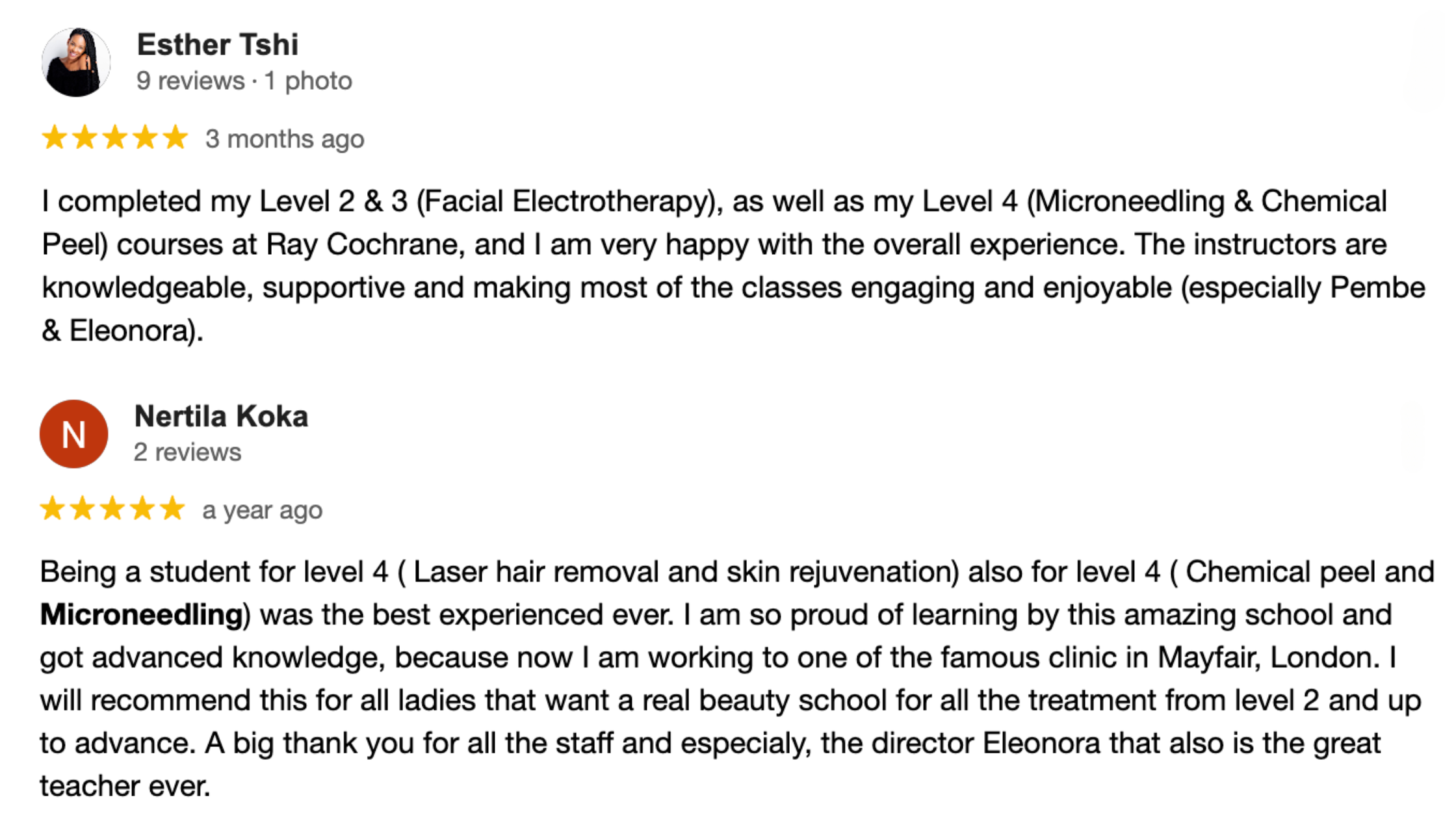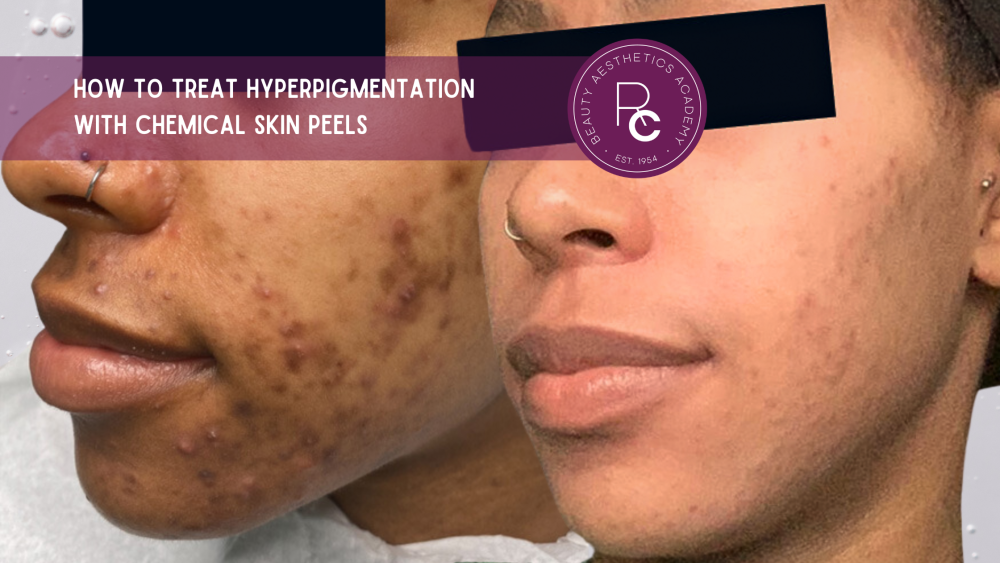
If you use any social media platform and are interested in beauty and aesthetics, you would have seen the transformative powers of a chemical peel by now! The chemical peel industry is valued at $2.2 million as of 2024 and is only expected to continue growing. Chemical peels are a popular choice to treat various skin concerns, including wrinkles, fine lines, scarring, uneven skin tone, and hyperpigmentation.
In this blog, we will focus on how chemical peels can benefit your client’s hyperpigmentation by delving into what hyperpigmentation is, the science behind chemical peels and how to become qualified to deliver chemical skin peeling treatments.
Lets get started!
What is hyperpigmentation?
Understanding how the skin works and the underlying causes of hyperpigmentation is the only way to begin effective and lasting treatment.
Hyperpigmentation, more commonly known as dark patches or discolouration, occurs from an overproduction of melanin, the pigment that gives skin its colour. This overproduction can be triggered by various factors such as sun exposure, hormonal changes, ageing, and inflammation.
It appears as dark patches or spots on the skin, disrupting an otherwise even skin tone. There are also many types of hyperpigmentation, such as melasma, postinflammatory hyperpigmentation, sun spots, liver spots and even freckles. While hyperpigmentation is not a health concern or even dangerous, it is definitely a cosmetic concern for many.
To treat hyperpigmentation, you need to use products that contain melanin suppressors to brighten, lighten, or fade the pigmentation. These suppressors suppress the process of melanogenesis- the production and distribution of melanin. You can only treat hyperpigmentation permanently by suppressing the body’s overproduction of melanin.
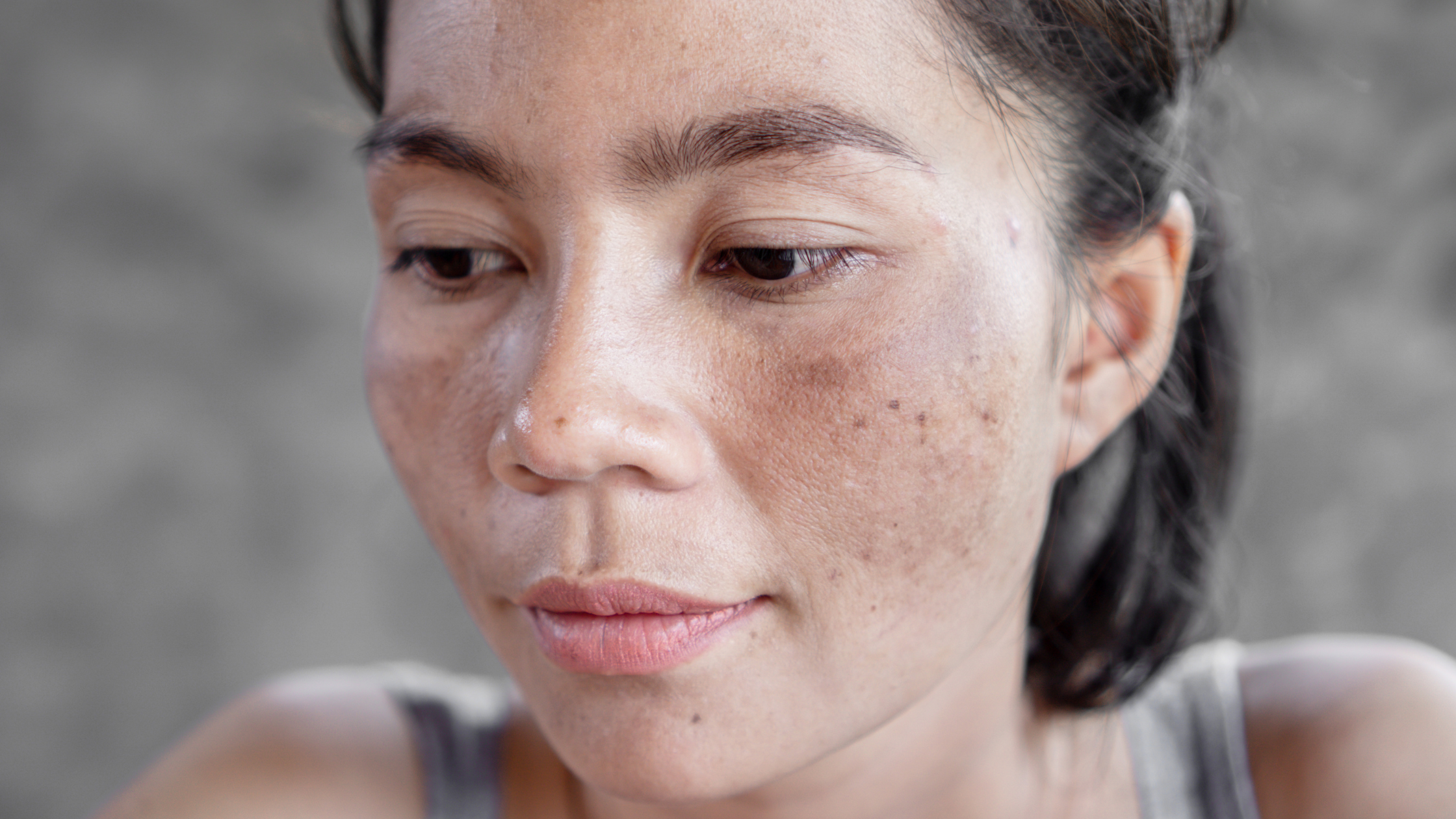
How to treat hyperpigmentation?
Treating existing hyperpigmentation marks and reducing the appearance of new ones is a multi-pronged approach. It begins with prevention – sunscreen, hats, and reducing exposure to the sun, which will ensure no new hyperpigmentation patches.
But what about existing hyperpigmentation? Usually, after clients have tried everything they can at home and found that they have not been able to fade their hyperpigmentation, they will turn to professional skincare treatments for hyperpigmentation. The options for professional treatments for hyperpigmentation include:
- Chemical Peels
- Microdermabrasion
- Laser resurfacing
- Intense pulse light therapy
- Prescribed medication such as retinoids and Hydroquinone.
Most aestheticians suggest that the first line of professional treatment often involves topical products such as chemical peels. These peels exfoliate the skin, removing the damaged outer layers and allowing healthy skin to emerge. But not all peels are created equal. The depth of the peel, its ingredients, and the skin’s response all determine its effectiveness in treating hyperpigmentation.
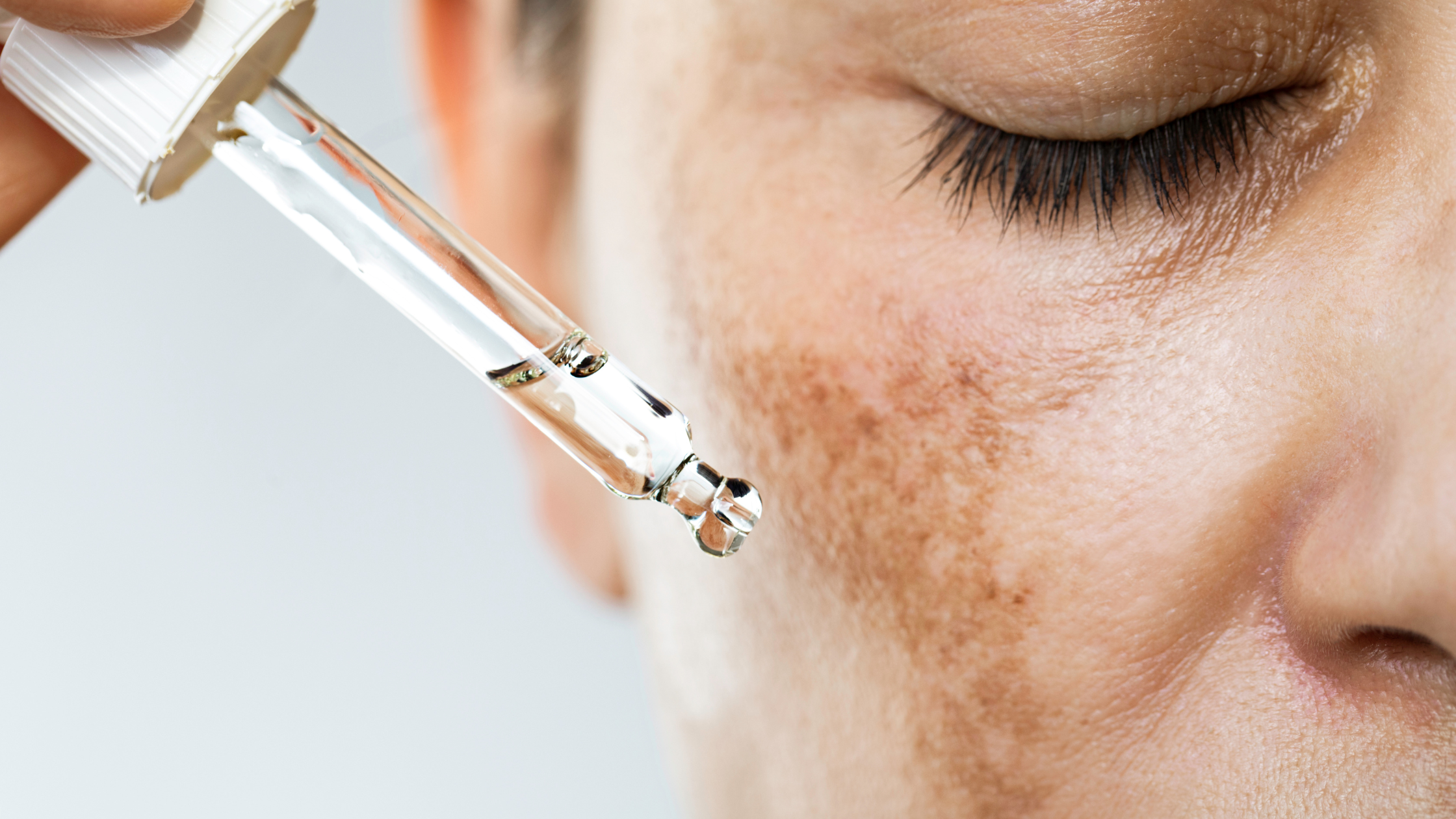
How do chemical peels treat hyperpigmentation?
Chemical peels are a powerful solution for addressing hyperpigmentation by effectively exfoliating the skin and targeting stubborn dark spots. The procedure consists of a carefully applied chemical solution to the skin, triggering a controlled exfoliation process that encourages the shedding of old, pigmented skin layers.
This gentle yet transformative process stimulates the skin’s regeneration process, promoting the development of fresh new skin cells and collagen, ultimately resulting in a more even and radiant complexion.
The intensity of chemical peels can vary, offering a range of options to cater to different skin needs. Superficial peels utilise gentle acids like alpha-hydroxy acids (AHAs) or beta-hydroxy acids (BHAs) to target the outermost skin layer, providing a mild yet effective exfoliation. Medium peels, often containing trichloroacetic Acid (TCA), penetrate deeper into the skin to remove more damaged cells.
For those seeking intensive skin repair, deep peels utilise ingredients targeting deeper dermal layers, significantly improving skin texture and tone. However, they require extended recovery periods and are more suitable for severe hyperpigmentation concerns.
Chemical peels work wonders to reduce the visibility of dark spots and other forms of hyperpigmentation by shedding pigmented skin layers and encouraging the growth of new, healthy skin. Moreover, this treatment addresses existing pigmentation issues by enhancing the skin’s ability to absorb skincare products more effectively. It contributes to the long-term improvement of overall skin health and luminosity.
Popular chemical peel ingredients to treat hyperpigmentation
Seven popular skincare ingredients often used for chemical peels are Vitamin C, Glycolic Acid, Salicylic Acid, Lactic Acid, Mandelic Acid, Kojic Acid, and Trichloroacetic Acid.
1. Vitamin C
It is a powerful antioxidant that helps to fade dark spots and brighten the skin over time. Applying Vitamin C directly to the skin is more effective than ingesting it. Topical Vitamin C is effective at lightening pigmentation and protecting the skin cells from sun damage.
2. Glycolic Acid
An AHA derived from sugarcane, is a great chemical exfoliant. It removes dead skin cells to reveal a healthier and brighter complexion. Glycolic Acid also has antibacterial and anti-ageing properties.
3. Salicylic Acid
A BHA naturally found in willow bark, is traditionally used to address pimples and acne-prone skin. However, Salicylic Acid is a common ingredient used in chemical peels to treat hyperpigmentation due to its ability to exfoliate, reduce inflammation, and safer peeling actions.
4. Lactic Acid
An AHA derived from milk, is commonly used in chemical peels due to its exfoliating properties. Lactic Acid not only increases cell turnover but also suppresses melanin production.
5. Mandelic Acid
An AHA found in almonds, is more commonly used on sensitive skin due to its gentler exfoliation. It is also known for its brightening properties, making it an excellent ingredient for treating hyperpigmentation.
6. Kojic Acid
Made from different types of fungi, is an excellent melanin suppressor. It prevents tyrosinase, the enzyme essential for melanin production, reducing dark spots and encouraging a more even skin tone.
7. Trichloroacetic Acid (TCA)
This is the most potent acid on the list, making it an excellent choice for deep chemical peels. However, its strength can be adjusted, changing the depth of the skin reached. It works to treat hyperpigmentation by exfoliating, removing damaged skin cells, and breaking down excess melanin.
Watch our Academy director and luxury skin clinic owner Eleonora Androva’s latest video, where she explains the key ingredients to fade hyperpigmentation in depth. ▼
Chemical peel results
Here are some before-and-after results from clients who have had chemical peels at Dermacure, our school director’s clinic.
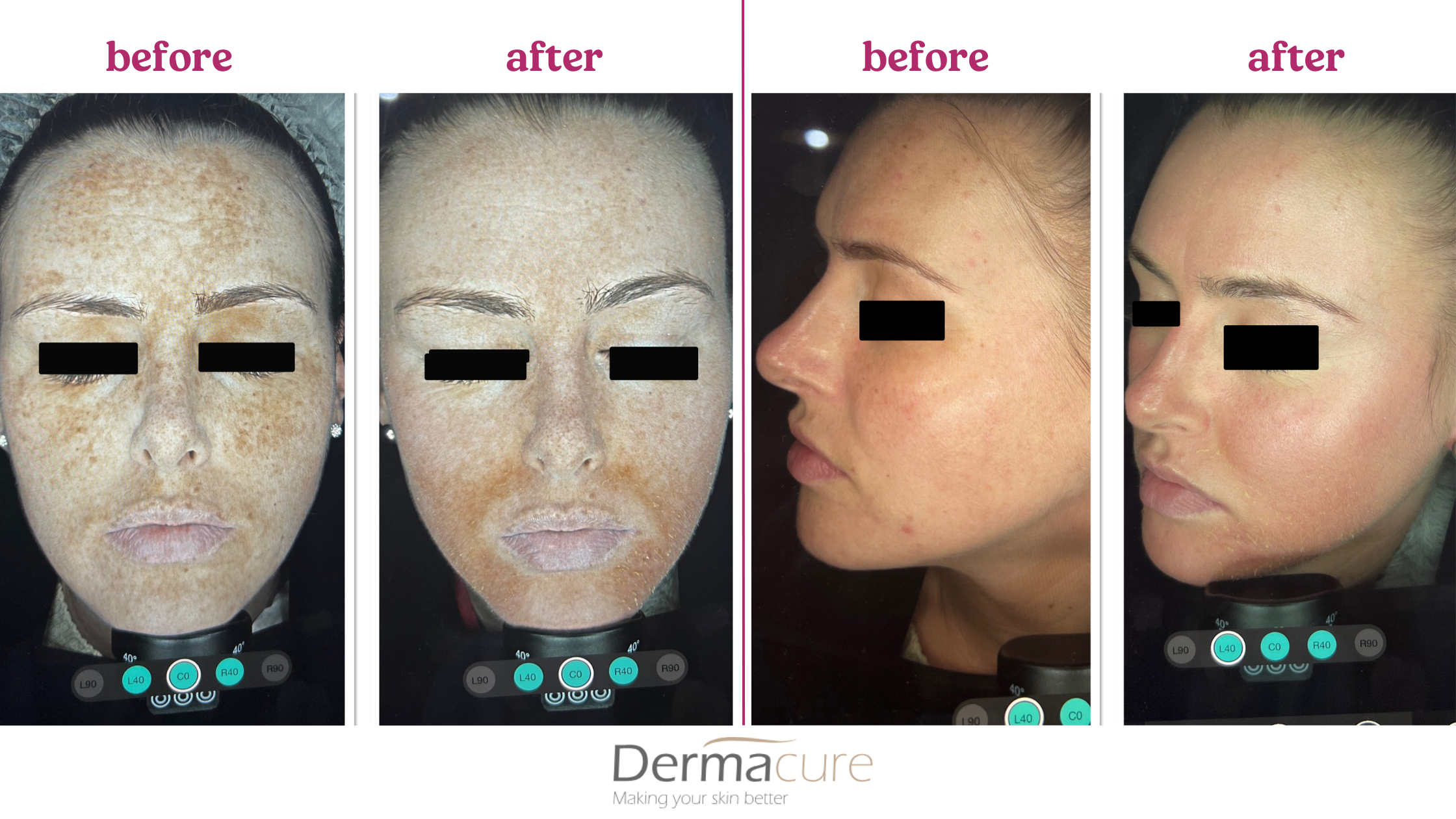
The Level 4 Certificate in Chemical Peels (Skin Peeling)
Are you a beauty therapist or Aesthetician interested in offering this treatment to your clients to treat their hyperpigmentation?
The VTCT Level 4 training in chemical peels is the only Ofqual-regulated training that teaches students everything they need to become chemical peel specialists. We can’t stress the importance of expert skincare knowledge when delivering advanced skincare treatments to clients. It sets you apart, bolsters your credibility, and equips you with the knowledge and skills to provide the best possible care for your clients.
Our skin peeling course at Ray Cochrane Beauty Aesthetic Academy runs for 12 weeks, with students attending one day a week for onsite theory and practical training. The curriculum includes comprehensive modules on client consultation, where students will learn effective communication and how to conduct a skin analysis to ensure clients are suitable for chemical peels. Students will also learn advanced skin anatomy and physiology to understand the various skin layers, functions, and impact of chemical peels.
The course also teaches the science behind chemical peels; learners will develop their theoretical knowledge of the different types of chemical peels, their ingredients and the types of hyperpigmentation they treat.
Finally, students on the course will master their practical application of chemical skin peels by completing hands-on training on live models provided by our academy to ensure they can safely deliver the treatment.

To enrol in our chemical peel training course, students must have completed a relevant Level 3 beauty therapy qualification. This ensures that they understand the basics of beauty therapy and skin treatments, as this is an advanced beauty aesthetic course.
Why complete a Level 4 Chemical Peeling course?
As already mentioned, the chemical peel industry is booming due to the amazing results the treatment allows clients. To enter the industry and take advantage of the interest in this treatment, you should get regulated training, especially as the government is cracking down on unregulated aesthetic treatments. After completing a Level 4 qualification, advancing to Level 5 is essential for offering advanced, specialised treatments that meet the highest industry standards.
There are many benefits to completing the skin peeling course with us at Ray Cochrane:
- Advanced Skills: Gain specialised skills in performing chemical peels, enhancing your service offerings.
- Professional Recognition: Earn a recognised Level 4 qualification, increasing client credibility and trust.
- Career Advancement: Improve employment opportunities in advanced aesthetics roles, including medical spas and dermatology clinics.
- Comprehensive Training: Benefit from detailed, hands-on training that prepares you for real-world applications.
Specialist expert knowledge is an invaluable investment in the beauty and aesthetic industry, where clients trust you with their skin and beauty. It allows you to offer accurate advice, recommend effective products, and provide safe and effective treatments, which builds trust and loyalty among your clientele.
